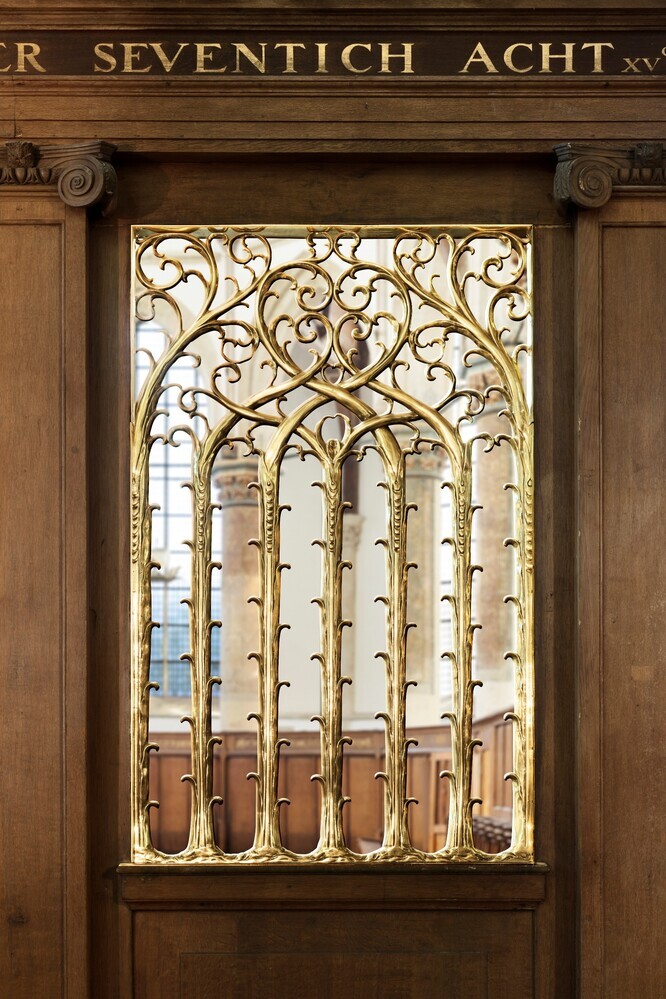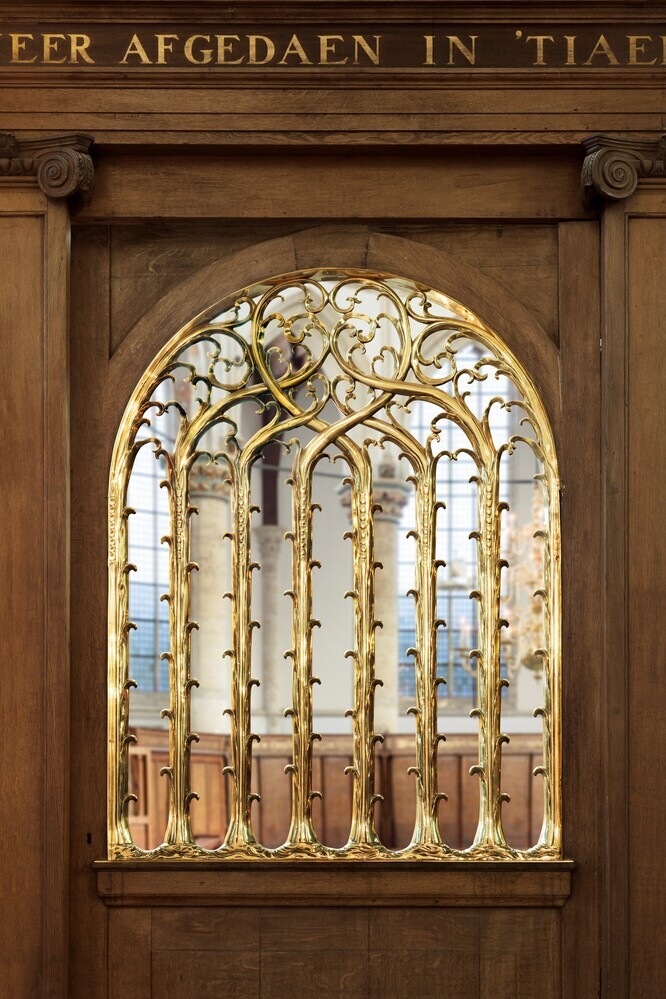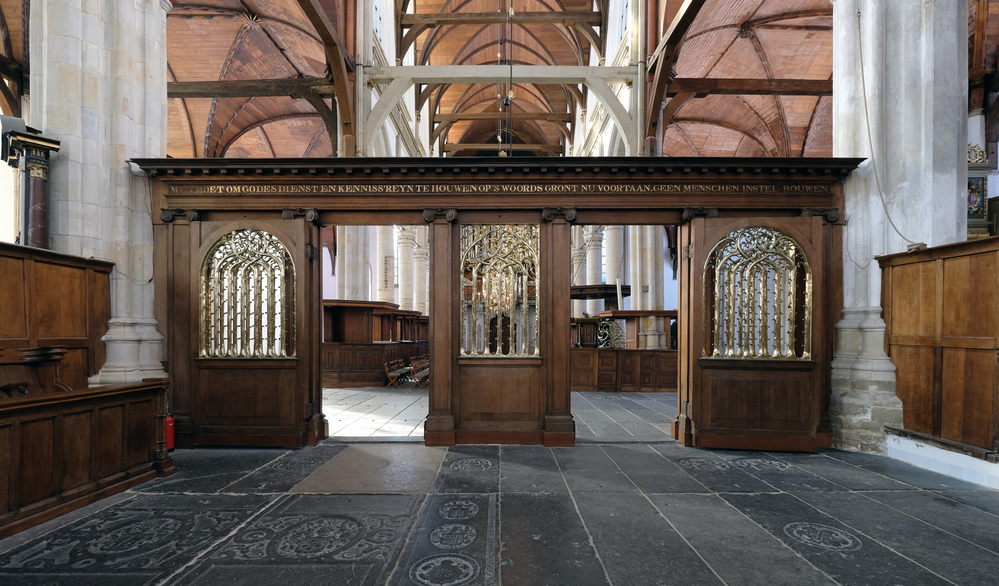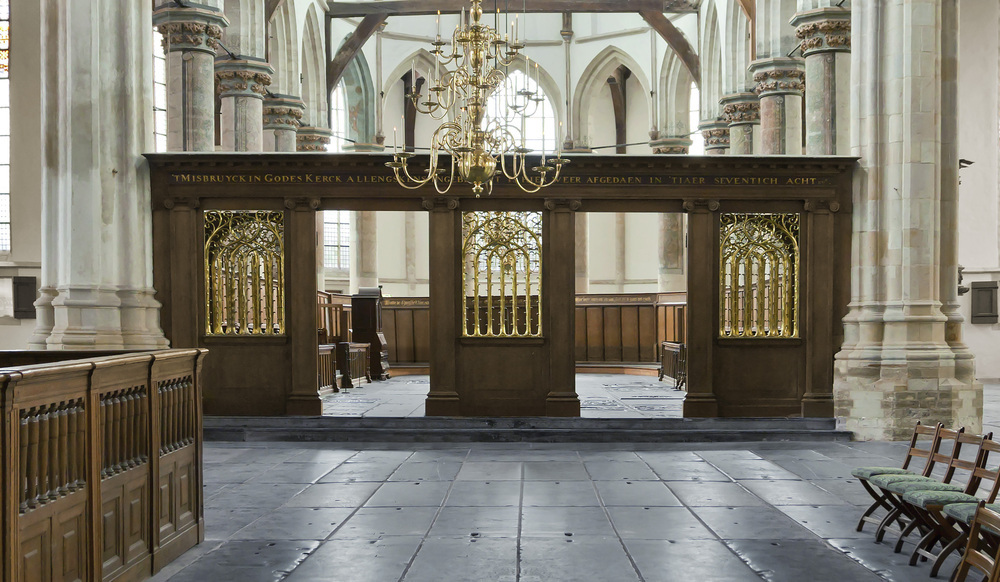Choir Screen in kwab style
In 1681, the Oude Kerk received a new choir screen, to replace the previous screen that was placed directly after the Alteration. Although this later version of the choir screen was classical in design, with wooden bays and a copper latticework, the brass casting is a highlight of the kwab style.
---
## Inscription
> ‘'t Misbruyck in Godes kerck allengsens inbrengen is hier weer afaen in 't iaer seventich acht.’'
This inscription - a reference to the Alteration - appears in gold letters on the frieze of the choir screen, which is part of the closure of the Hoogkoor. Amsterdam was transitioning from Catholicism to Protestantism. The word “abuse” (misbruyck) in this context was meant to refer to Catholic altars and rituals, which disappeared after the Alteration. Henceforth, the Word of God took center stage, and images, candles and incense were banned from the church.
## Rivalry with the Nieuwe Kerk
The Oude Kerk commissioned a new choir screen in 1681 in response to the Nieuwe Kerk, which shortly before had commissioned an all-copper choir screen in kwab style. There had traditionally been rivalry between the two churches, and the Oude Kerk's old choir screen could no longer match the splendor of the Nieuwe Kerk's new screen. By choosing a combination of wooden bays and copper bars, the Oude Kerk underscored its longer history and historical importance. The inscription, already on the previous fence, reinforced this message.
The choir screen in the Dutch classicist style was designed by Adriaen Cuyper in collaboration with carpenter Adriaen de Jonge. The detailed lattice work in kwab style was made by yellow-founder Gillis Wijbrandts, presumably to a design by Johannes Lutma the Younger, one of the most important artists within this style.
## What is the kwab style?
The kwab style is characterized by organic, pleated forms with flowing contours and an almost slimy appearance. This dynamic style contrasts sharply with the classical, symmetrical designs of the same period. In seventeenth-century Holland, appreciation grew for this bold style, which was increasingly used in decorative art and architecture. Other objects in kwab style can be found in the church, such as the Kwab style pulpit.
| Period | 17th century |
| Dimensions | Hoogte ca. 500 cm, breedte ca. 950 cm. |
| Location | Hoogkoor |
| Materials | Wood, gold leaf, copper, brass |
| Number of parts | 1 |
Part of
Read more
Related
Read more
Read more
Read more
Identifiers for references
| Oude kerk Adlib Collect priref | 1878 |



